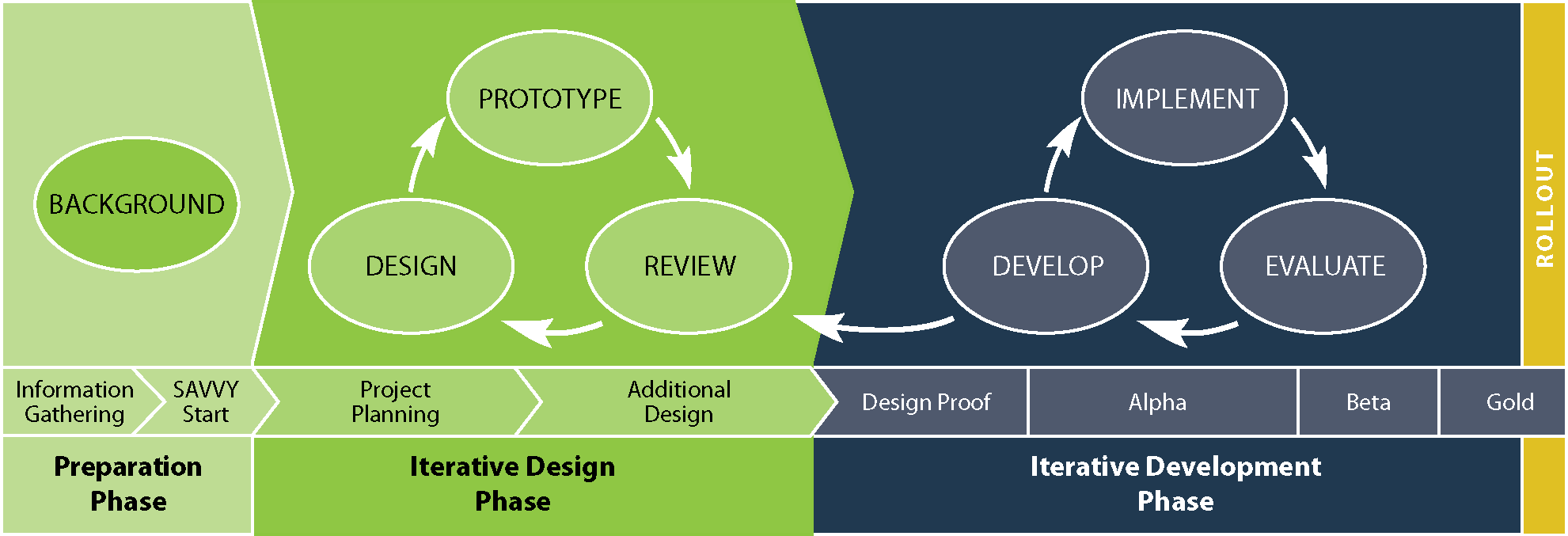Successive Approximation Model (SAM)
The Successive Approximation Model (SAM) is an agile, iterative framework that uses rapid prototyping and continuous feedback to create flexible, learner-centered training.

Successive Approximation Model (SAM)
Overview
The Successive Approximation Model (SAM), developed by Michael Allen, is an agile and iterative framework designed to overcome the rigid, linear structure of models like ADDIE. Its strength lies in cycles of prototyping, feedback, and continuous improvement that make learning materials more adaptive and effective. Unlike models that save evaluation for the end, SAM integrates feedback throughout the design process, reducing risk and aligning content closely with learner needs.

SAM operates through three phases:
- Preparation Phase: This stage sets the foundation. Instructional designers collaborate with subject matter experts (SMEs) and stakeholders to clarify project goals, audience needs, and constraints. Activities include needs assessment, defining clear learning objectives, and gathering background information. The outcome is a blueprint that ensures the design process is grounded in solid data and realistic expectations.
- Iterative Design Phase: Here, ideas start taking shape through prototypes. Designers build quick drafts/storyboards, wireframes, or early mockups that capture the structure and flow of learning materials. These are shared with SMEs and stakeholders for immediate feedback, leading to refinement. The emphasis is on speed and collaboration, prioritizing function over polish to test what works before investing deeply in development.
- Iterative Development Phase: This is where content is built, tested, and continuously refined. Drafts move through versions (Alpha, Beta, Gold), with each stage incorporating feedback from stakeholders and learners. By the Gold stage, the learning materials are polished and aligned with objectives, ready for rollout. This cycle ensures quality and responsiveness while avoiding the costly pitfalls of late-stage corrections.
"SAM reminds us that design is never finished. It evolves through cycles of creation, feedback, and refinement until it truly meets the learner's needs."
Implications of SAM for Instructional (Learning) Design
SAM pushes instructional design toward agility and collaboration. Instead of waiting until the end to see if a course works, it emphasizes real-time iteration, giving designers and SMEs the chance to spot gaps early and make corrections quickly. This model supports a learner-centered approach by using feedback loops to refine content until it resonates with the audience.
The implications are significant:
- Instructional designers must be comfortable with ambiguity and iteration, embracing prototypes that are intentionally rough.
- Stakeholder collaboration isn't optional, it's central. Frequent check-ins demand clear communication and shared ownership of the process.
- Projects benefit from reduced risk of failure, since issues are discovered and resolved along the way rather than surfacing at the end.
“SAM transforms design into a dialogue, where every cycle of feedback sharpens the learning experience.”


